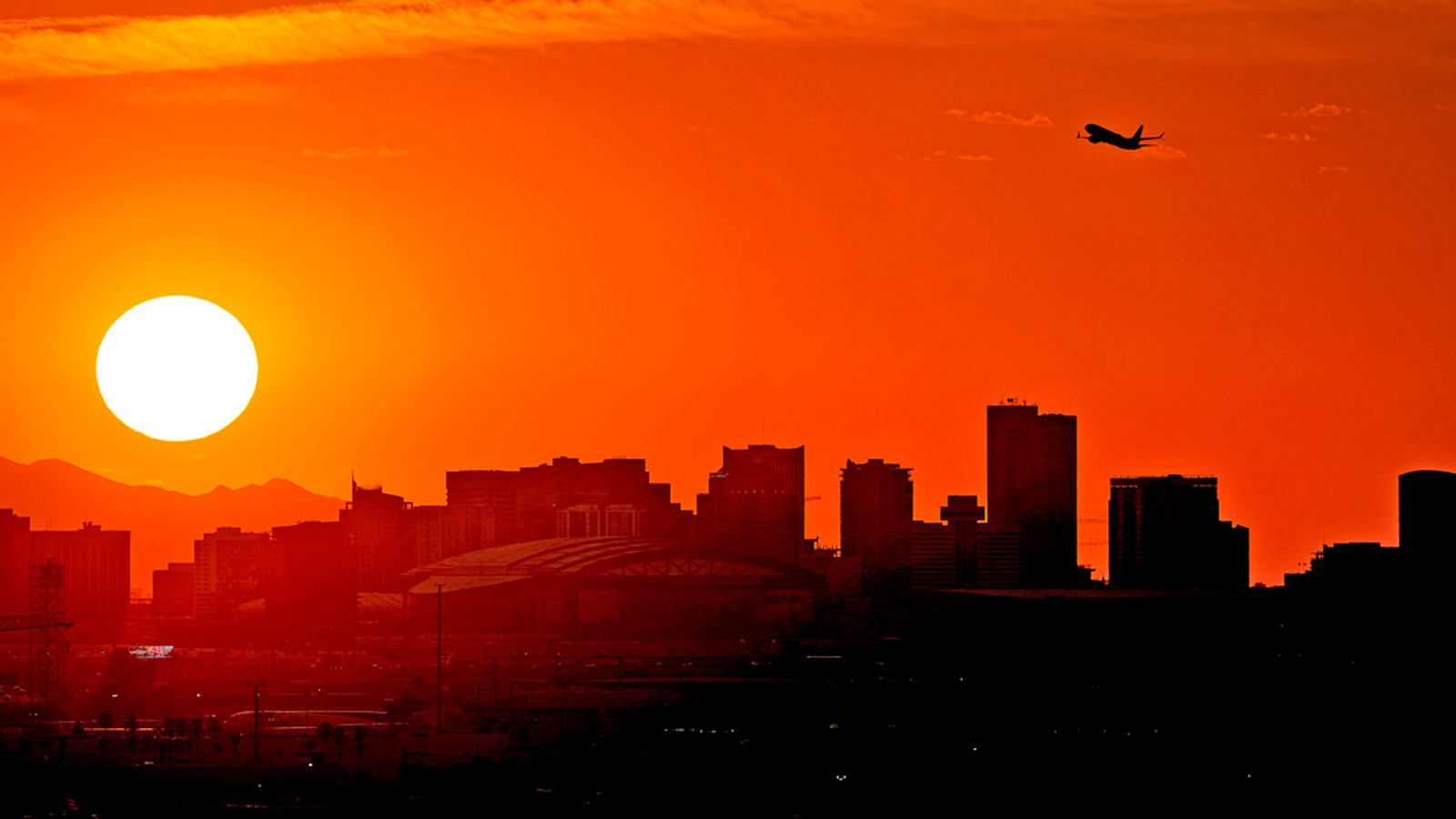First oil nears for Kazakhstan’s supergiant field
Oct 18, 2012, 7:51 AM
KASHAGAN OILFIELD, Kazakhstan (AP) – The manmade islands that are home to Kazakhstan’s mammoth Kashagan oilfield project rise like a mirage to the boats churning through the shallow waters of the Caspian Sea.
Creating them has been a gargantuan feat but the real test is yet to come, as uncertainty persists on when the first oil will actually be drawn, although that’s expected sometime next year.
When surveyors confirmed in 2000 that Kazakhstan had a new supergiant oil reserve, the world’s energy companies reacted with glee. It was the type of find that had no longer seemed possible. Nothing that big had been seen in four decades.
Kazakhstan’s President Nursultan Nazarbayev branded the Kashagan field, which some believe holds up to 13 billion barrels of recoverable oil, as the great hope for the future of his fledgling Central Asian nation.
Yet developing a remote offshore site half the size of Delaware that is blighted by weather ranging from blazing to glacial has proven difficult. The northern section of the landlocked Caspian Sea is extremely shallow compared to most offshore energy projects. That makes transporting heavy equipment a problem, as deep-hulled vessels can’t be used. The area’s fragile ecosystem is also the site of spawning grounds for endangered sturgeon, birthing habitat for the rare Caspian seal and migratory sites for numerous birds.
Delays in the Kashagan project have also strained relations between the oil companies developing it _ from Italy, France, Holland, the United States and Japan _ and the government of Kazakhstan.
Kazakhstan, a mainly Muslim nation four times the size of Texas that borders Russia and China, gained independence after the 1991 collapse of the Soviet Union. It’s a thinly populated steppe nation of 16.5 million people that has grown wealthy off of several major oil projects and other substantial mineral reserves. Many locals, however, complain that the country’s riches are poorly distributed.
ON THE ISLANDS
Away from the politics, technicians on Kashagan’s hub island _ two long, narrow mazes of wells and processing modules linked by a bridge to form what is known as D-Island _ exude pride in what they have achieved.
“In 2004, when we first started, the island was just a small box,” said Giancarlo Ruiu, offshore project manager with Agip KCO, a subsidiary of the Italian oil giant ENI, which has led the work on Kashagan. Other companies in the consortium are Shell, ExxonMobil, Total, ConocoPhillips, Inpex and Kazakhstan’s state-owned KazMunaiGaz.
The rocks and sand needed to build up D-Island and its four satellite islands were laboriously transported from the once-vibrant fishing port of Bautino, some 350 kilometers (217 miles) to the south.
But when the wind pushes the Caspian’s lime-green waters south, in effect tilting the entire sea to below-navigable levels, the 18-hour summertime boat trip can become impossible, forcing workers to rely on helicopters. In the winter, ice breakers are deployed to clear paths for convoys to make the stultifying 36-hour voyage.
To protect D-Island from destructive ice drifts, a defensive ring had to be erected.
“You can occasionally get very rare conditions, where it is partially melted, and the water and semi-melted ice becomes like a lubricant. And when you get a surge of the ice, it can move very quickly,” said Robert Dunkley, head of information and design at Agip KCO.
The construction team used a computerized system to carefully place tons of material, using building techniques similar to those that created Dubai’s palm tree-shaped islands.
“We used to say that you are just dumping rock,” Ruiu said. “(But) every single placement of rock was done with GPS control” to calculate depth and location.
In all, some 200,000 tons of concrete, enough to fill 50 Olympic swimming pools, and 600,000 truckloads of rock were used to form D-Island.
The island is now a dense forest of barges housing facilities such as gas injection equipment and emergency generators from Norway, Italy and Dubai.
In parallel with the construction, 12 wells were put down on D-Island to begin tapping into the highly pressurized reservoirs of sulfurous oil located 4,200 meters (13,780 feet) below the seabed. Another eight wells are primed to go on the smaller A-Island, while drilling is still ongoing to complete a further 20 wells on three remaining islands by the end of 2016.
In the meantime, thousands of laborers in orange suits work on the islands and sleep in floating apartment blocks during monthlong shifts. Sometime next year, the workforce on D-Island will be scaled down to 240 people and the largely automated offshore operations will be run from a high-tech control room.
IT WAS A GAMBLE
When test crude at Kashagan was discovered in 2000, oil prices were around $30 per barrel. This made any massive investment on a problematic energy project seem potentially foolhardy, but could also keep costs down.
The price of oil more than tripled over the decade, however, which sent outlays for energy-intensive construction labor, equipment and materials soaring as well.
More than $30 billion has been spent so far on the Kashagan project, way more than its original $10 billion estimate. The final bill for the Phase 1 development stage could even gallop past $45 billion. That figure will swell more with Phase 2 drilling at other patches of the field.
“It’s not going to be profitable for the companies until you get into Phase 2,” said Andrew Neff, Moscow-based senior analyst with IHS Energy. “Phase 2 is supposed to be by 2018-2019 and there hasn’t been any progress in the last two years as far as I’m aware.”
Kazakhstan has been irritated by the frequent postponement of the first oil, which over-optimistic planners had once said would start by 2005.
Kashagan operates under a production-sharing agreement where international companies pay for the exploration and development costs. Returns are shared between investors and the government on a sliding scale.
Now that Kazakhstan is growing increasingly rich on oil from other fields, it negotiates from a position of strength and has sought to adapt the deal to more favorable terms. The government is eager to begin receiving oil royalty payments and the state-owned KazMunaiGaz is due a share in the profits as a 16.85 percent owner.
“Everybody has been looking at Kashagan as this great cash cow coming down the road soon,” Neff said.
While a KazMunaiGaz chief executive predicted a few years ago that Caspian oil would boost the country’s annual oil production up to 180 million tons _ equivalent to 1.3 billion barrels _ by 2015, officials now have tamped that down to 90 million tons.
To reach that target, Kashagan will need to deliver 370,000 barrels of oil a day.
The production-sharing agreement expires in 2041 _ a date that is distressingly near to consortium members, considering the size of their investments. On the bright side for the companies, oil was selling for around $92 a barrel this week.
“We know the life of this field is much longer than 2041,” said Alain Guenot, planning director of North Caspian Operating Co., the joint venture that manages Kashagan. “Everybody would like to extend the (deal).”
While Kazakh officials and oil executives are eager to start pumping, workers on the ground are more sanguine.
“Without production, we don’t have revenue, they don’t have revenue, and they’d like to have revenue as soon as possible,” Guenot said. “(But) we’re not going to start this plant if we’re not sure that it’s properly finished.”
(Copyright 2012 The Associated Press. All rights reserved. This material may not be published, broadcast, rewritten or redistributed.)









